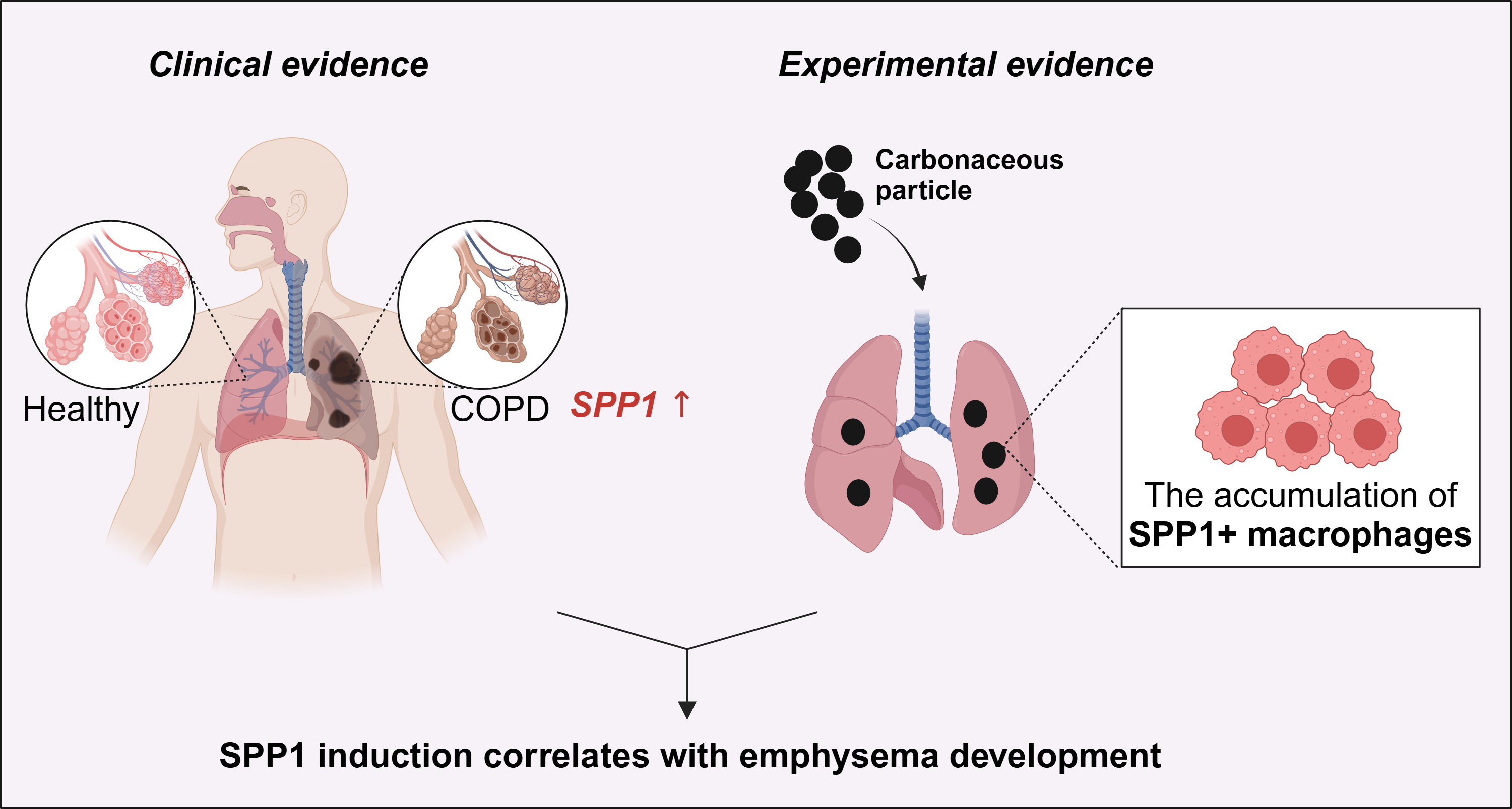Carbonaceous particle exposure contributes to chronic lung disease development
10 March 2025A recent study by nanoPASS partner Helmholtz Munich, led by Lianyong Han, Verena Haefner, Ali Önder Yildirim, Heiko Adler, and Tobias Stoeger, explores the role of carbonaceous particle exposure in the progression of chronic obstructive pulmonary disease (COPD). The research highlights how inhaled particles trigger the accumulation of SPP1+ macrophages in the lungs, contributing to emphysema progression.
The study found that SPP1 (Osteopontin), a protein linked to inflammation, is significantly upregulated in COPD patients and experimental models. These findings suggest that environmental particle exposure plays a critical role in lung inflammation and tissue damage, positioning SPP1+ macrophages as a potential target for COPD prevention. Given the widespread exposure to air pollution, the research underscores the importance of understanding its long-term health effects.
Figure: Environmental particle pollution exposure contributes to chronic lung disease development Created in BioRender. Han, L. (2025) https://BioRender.com/v89m537
